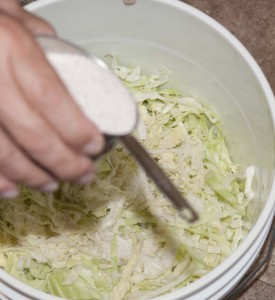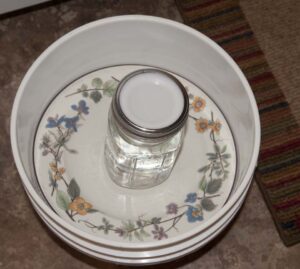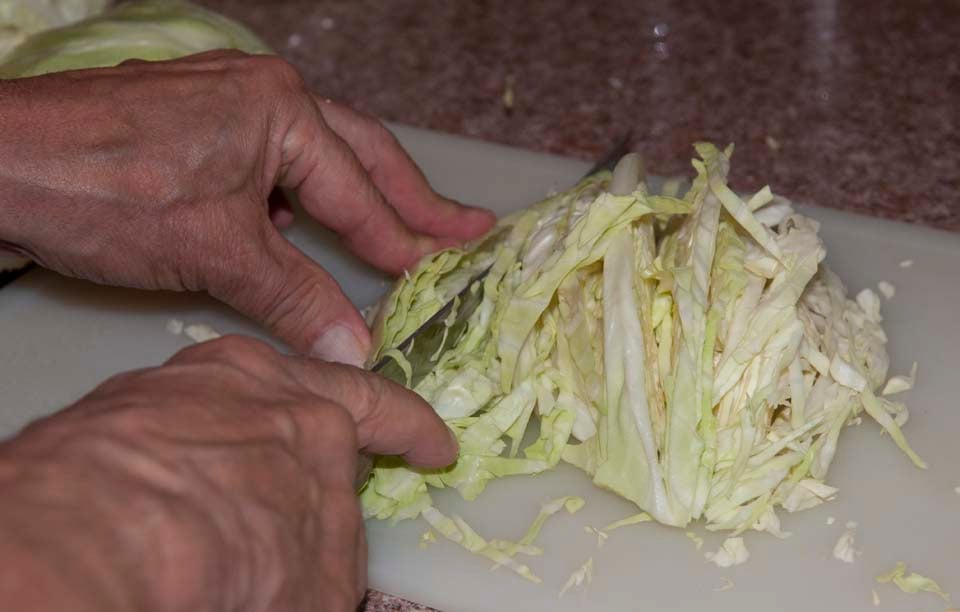I spent this afternoon making sauerkraut. First off forget the sauerkraut you buy in the stores it is barely in the same family. Home made is delicious and does not have the acid taste of store bought. It is simple to make and a great way to preserve cabbage.
All it takes is a food grade plastic bucket (you can also use glass or crocks) cabbage and iodine free salt. You can’t use metal containers of any kind. Cut the cabbage into quarters and remove the stem. Slice the cabbage is approximately 1/8 inch thick slices. Place the cabbage in the bucket, every few inches add a little salt and toss the cabbage like you would a salad. Five pounds of cabbage should take about three tablespoons of salt; twenty-five pounds should take about three quarters of a cup.

Place a plate on top of the cabbage that just fits in the bucket, I set a quart mason jar of water on top to press it down. This adds pressure and helps force the water out of the cabbage. Keep an eye on the cabbage until the brine completely covers it, you may have to press down on the plate periodically. This can take up to about 24 hours, as the salt draws the water out of the cabbage. Older cabbage contains less water. If the brine does not rise above the plate by the next day, add enough salt water to bring the brine above the plate. Use a mixture of a teaspoon of salt to a cup of water and stir until it’s completely dissolved.

Check the sauerkraut every day or two. The volume of cabbage reduces as the fermentation proceeds. Occasionally scum will appears on the surface. Skim it off the surface. Don’t worry if it breaks up and you can’t remove all of it. The sauerkraut is under the protection of the brine.
The best temperature for fermenting is 70 to 75 degrees. At this temperature it should take 3 to 4 weeks. At 60 to 65 degrees, it will take 5 to 6 weeks. At too low a temperature, it may not ferment at all. If you have a temperature, above 75 degrees the cabbage may get soft.

Mine is now setting in a corner of the kitchen slowly fermenting. In a about 4 weeks I will let you know what it tastes like and how to continue to preserve it.
Howard
PS, The batch came out great
Howard



THANK YOU THANK YOU
Next time try it with red cabbage.
Also a couple of grated carrots per large head of cabbage is good too.